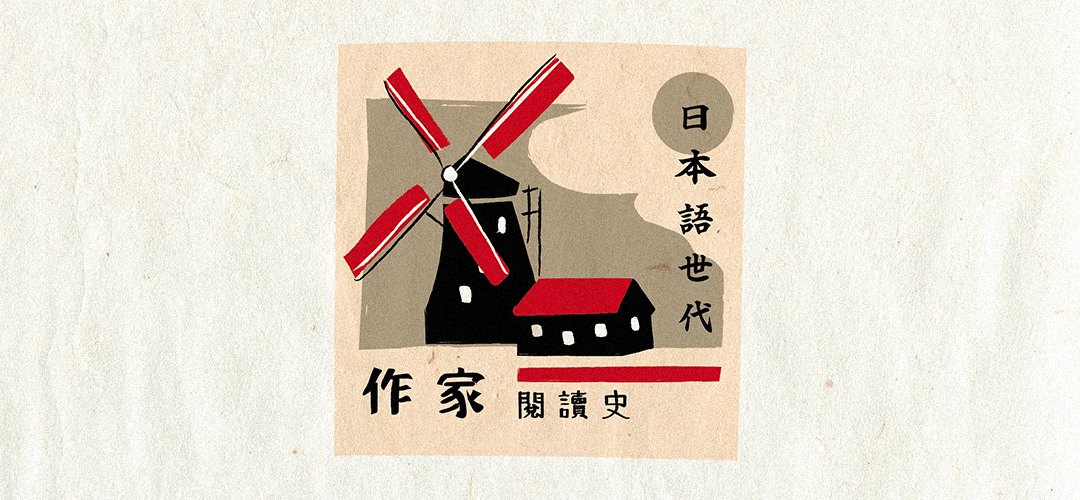 影音檔案庫
影音檔案庫


Translated by Lee Ying-Yi (李盈儀)
Records related to futurism in Taiwan Daily News and Tainan Shinpo were a lot more than Dadaism and surrealism. This is mainly because the development of futurism (1909) in Europe began earlier than that of Dadaism’s (1916) and surrealism’s (1924). However, interestingly, the influences of futurism in the Taiwanese literary field does not seem as significant as the effects of Dadaism or surrealism. Since Taiwanese writers had not yet touched upon the ideas of Dadaism or surrealism, a large portion of related articles and literary practice came from Japanese authors who were active in the central literary field or Japanese authors residing in Taiwan. Compared to futurism, there are few records about Dadaism and surrealism during the early stages of their development. However, with the gathering of the poets from Le Moulin Rouge Poetry Society in 1933 (with key person Yang Chichang as editor of the arts column of Tainan Shinpo) along with Mitsuru Nishikawa, who returned from Japan’s Waseda University and became in charge of the arts column of Taiwan Daily News, the influences of Dadaism and surrealism in Taiwan seems to be more profound and lasting.
Currently, the earliest discussion on surrealism in Taiwan is the article “The Surrealism of Contemporary French Poetry: A Report on French Poetry’s Development from Dadaism to Surrealism” by Kenichiro Tsukamoto published on Taiwan Daily News on March 4th, 1929. The life of Tsukamoto is unclear. The only records are the fact that he was born in Akita, Japan, and had been assigned to Fuzhou as a common school’s director of student affairs. The beginning of “The Surrealism of Contemporary French Poetry” quoted from “The Status Quo of French Poetry (1918-1925),” written by Bernard Faÿ (1893-1978) and translated by Fuyohiko Kitagawa (1900-1990), to discuss the evolution of aesthetic flows from Dadaism to surrealism in France, and to further explain the concepts of each aesthetic ideology. “The Surrealism of Contemporary French Poetry” of which Tsukamoto quoted from was first published in the first issue of Poetry and Poetics, the iconic journal of Japanese modernism, in the September of 1928, showing Tsukamoto’s instant concern for the central literary field.
Regarding Dadaism, Tsukamoto mentioned artists such as Tristan Tzara (1878-1941), Jean Arp (1886-1966), and Richard Huelsenbeck (1892-1974). Tsukamoto commented that Dadaism inherited from cubism while fighting against it at the same time. The legacy of Dadaism after it died down include constructivism in paintings and surrealism movements in poetry. Tsukamoto thinks that compared to Dadaism, surrealism is neither destructive nor negative, but an ideology that had detached itself from Dadaism under regular developments. Regarding surrealist poets, Tsukamoto named Philippe Soupault (1897-1990), Louis Aragon (1897-1982), Yvan Goll (1891-1950), and Paul Éluard (1895-1952). As for surrealist artists, there are Marc Chagall (1887-1985) and Giorgio de Chirico (1888-1978).
It is also noteworthy that Tsukamoto also talked about the expansion of surrealism movements in Japan in addition to the situation in France. Furthermore, aside from introducing aesthetic theories and art movement histories, “The Surrealism of Contemporary French Poetry” included the Japanese translated works of French surrealist poets Louis Aragon and Paul Éluard; poems from Toshio Ueda (1900-1982), the founder of Japanese magazine Literary Aesthetics (Bungei Tanbi), and Katue Kitasono were also incorporated in Tsukamoto’s article. Remarkably, “The Surrealism of Contemporary French Poetry” was published on March 4th, 1929, which was only 4 years later than the first publication of André Robert Breton’s Surrealist Manifesto (Manifeste du surréalisme), and was almost in sync with the first wave of introduction to surrealism of Japan’s central literary field. When the article was published, Junzaburo Nishiwaki had not even published the important essay collection Surrealistic Poetics (Chôgenjitsu shugi shiron) (November, 1929). Although there is no evidence to prove that Yang Chichang (1908-1994) from Le Moulin Rouge Poetry Society had read “The Surrealism of Contemporary French Poetry” before he went to Japan in 1930, at least it is doubtless that the concept of surrealism, including theories and actual practice as well as the development from France to Japan, had been discussed on Taiwan Daily News, which was the most influential newspaper in Taiwan. Based on the timeline of events, it would not be exaggerating to assume that it may have encouraged Yang to apply for the French department of Saga High School, or have become a warm up for Yang’s pursuit in the literary career in Japan.
The earliest records of surrealism on Tainan Shinpo might be “Surrealism in Movies: Current French Movies Tries Latest Techniques in An Andalusian Dog (Un Chien Andalou)” on May 9th, 1930. On the whole, this article documented the summary and release of the surrealism movie, An Andalusian Dog, which was directed by Luis Buñuel Portolés (1900-1983) and co-created by Salvador Dalí (1904-1989).
Japanese novelist Tatsuo Hori’s essay “Questions About Surrealism” (temporary translation) part 1 and 2 were published on Tainan Shinpo on June 15th and 16th, 1930 respectively. The same article was once again published on Taiwan Daily News on July 21st, 1930. Hori mentioned in the article that he was being asked by a magazine editor what he thinks about the question “has surrealism withered?” He replied, although surrealism was popular last year (1929), there are signs of surrealism dying down. However, surrealism’s mission had been accomplished. Hori regards the purpose of surrealism as “changing our perspectives of perceiving art.” Yet, Hori also emphasized that the change “is not changing art itself, but the way we perceive art.” For instance, surrealists considered Charles Pierre Baudelaire as “a surrealist of morality” (quoted from Breton’s Surrealist Manifesto). Hori did not oppose to this saying, “because no outstanding artist would be satisfied by the worldly ‘reality,’ so they need to capture ‘the reality that is more authentic than reality.’” Hori thinks that although surrealism allowed a new “explanation” for arts, he questions whether it is possible to “create new poetry.” He believes one should “utilize surrealism as the key to poetry; yet apply classicism to write poems.”
The “classicism” mentioned above does not refer to the classicism of “returning to the Japanese classic traditions,” but as if a levitating force of a helium balloon leaving the surface (reality) to rise up in the air. Hori’s article “Surrealism… and others” 〈超現實主義······その他〉published in Taiwan Daily News on April 20th, 1930 made a clearer clarification about classicism. He used apples as an example, claiming that many people before Newton had all seen an apple fall off a tree; yet their experience were of no avail because they did not have the same acute observation skills as Newton did. Hori suggests that these art works may seem peculiar at first sight, but audiences will realize they are simply parts of our daily lives the next second. Furthermore, Hori also emphasizes “calculation” is “intellect.” The object of this conversation may not be the Japanese surrealism, but the surreal of the subconscious that Breton explored through dreams and madness. Therefore, the “calculation” that Hori emphasized is the mainstream of Japanese surrealism. We can also see similes and traces of “intellectualism” that were identical to Hori’s ideas in Yang Chichang’s poetics.
Aside from the articles mentioned above, what is also worth mentioning is Mitsuru Nishikawa’s “The Flow from Dadaism to Surrealism” published in Taiwan Daily News on January 22nd and 23rd, 1934. This article was published while Nishikawa was working on his poetry collection Mazu Festival. This article was Nishikawa’s first article after he returned to Taiwan and started working in Taiwan Daily News, which is also an extremely rarely seen systematic introduction to the modern aesthetic development. Therefore, this article has both significant iconic and practical significance to Nishikawa himself and to the advancements of modernism movement in Taiwan.
Nishikawa’s “The Flow from Dadaism to Surrealism” began with talking about the Dadaism movement, presenting the aesthetic changes from Dadaism to Breton’s second declaration of Surrealist Manifesto in regards to the dismantling of leftism in western Europe. Compared to the formerly mentioned “The Surrealism of Contemporary French Poetry” by Tsukamoto, Nishikawa’s article is more abundant and solid in terms of content. Besides, due to the five years of time difference between the publication of the two essays, Nishikawa was allowed to replenish the latest dynamics of Dadaism and surrealism after the peak of their development with a hindsight perspective. What he focused on was no longer the deconstructing and nihilism of Dadism, but the collage and reconstruction of fragments. His understanding of movies being influenced by Dadaism and become “rapid, metaphorical continuations” actually refers to the montage theory. Notably, in Mazu Festival that portrays Taiwanese islanders’ religious activities, Nishikawa inserted and collaged a lot of Taiwanese phrases, Han poetry, Buddhist scriptures, and legends in Japanese verses. Through the method of “unity,” glamourous and symphonic pictures of the Taiwanese islanders’ festivals were formed. Thus, to a certain degree, this can be regarded as the application of Dadaism’s montage in poetry. Interestingly, instead of saying Nishikawa was influenced by the theory and therefore consciously experimenting it, it is better to understand the situation as him finding a connection point in the uniqueness and sensitivity in the Taiwanese festival which triggered him to practice Dadaism.
Regarding surrealism, Nishikawa puts much emphasis on the close relationship between the pioneering symbolists and surrealism. Considering symbolists, Nishikawa often mentions Arthur Rimbaud’s poetry collection Vowels, as well as the realm of “correspondent” demonstrated in Charles Baudelaire’s “Correspondences,” in which “the perfumes, the colors and the sounds respond.” For Nishikawa, this is the genealogy from the “supernatural” to the “surreal.” Interestingly, he found a contact point between the Taiwanese folkways and the Western aesthetic trend of thought in Taiwanese folklores, tales, and the daily lives of the Taiwanese people. Temples and festivals are a special space where sensations go beyond their original limits. Through Nishikawa’s poems about temples and festivals, we can often realize the Taiwanese supernatural/surreal which is rich in poetics responses to the world of the unknown via symbolic rituals.
Editor: Yeh Hsing-Jou
Proofreading: Yizai Seah